Prior to our long road trip last month, M had called from Boston and asked me, “What’s the weather on the coast like in March?”
I exhaled with doubt and not a little cynicism, “Wet. Grey. Temps in the 40s, maybe around 50.”
“That sounds great!” he gushed. It left me puzzled for several minutes, till I remembered he was going to fly away from New England, and a record snowfall in Boston. Obviously rain was an improvement, and 40s sounded like a heat wave.
Though it was cool and wet, it suited me just fine and kept most of the other tourists and locals away. We practically had the grounds to ourselves, as you will see from the photos.

My earlier blog post referencing our trip to Butchart Gardens included only a couple of lovely shots and a promise to post again. Here it is! Lots of photos. In fact, way too many for a blog post. If you really want to see a bunch of garden photos, please visit my Flickr page.
Jennie Butchart was the chemist for the family business, but her soul’s work was gardening. She and Isaburo Kishida began designing a Japanese Garden in 1906. Mrs. Butchart also had her eye on Robert Butchart’s quarry. As her husband exhausted the limestone quarry in 1908, Jennie was having topsoil hauled in to line the floor. One of the first things she planted was a row of poplars to block the view of the concrete factory, and those trees remain. Mr. Butchart was very supportive of his wife’s garden, and was pleased that the grounds and ponds were suitable to his own hobby of collecting birds.
The couple gave the garden to their grandson Ian Ross for his 21st birthday. Mr. Ross revitalized the garden and the couple’s home, and hosted events – such as the symphony – to share the place with the community.
By the 1920s, more than 50,000 people a year were visiting Jennie’s garden, and today visitors number nearly one million each year. In 2004 the garden was designated a National Historic Site of Canada. The garden has grown to 55 acres and spread well beyond the old quarry pit. In addition to the Sunken Garden (in the pit), other main gardens are the Rose Garden, the Japanese Garden, and the Italian Garden. (More info at The Butchart Story.)

Entering the Japanese garden, I had M place a pebble onto the Torii gate for us. While I was in Japan, it was explained to me that, since the torii is a gate to the spirit world, the rock holds a connection back to your own world, so you have a better chance of being able to return. I don’t know if it’s a true Japanese tradition, but I love it. Torii that I saw in Japan frequently had pebbles along the top.

M had been asking me periodically what the plants were called, how they grew, were they found in the wild. We walked into the greenhouse and our roles reversed! M talked with delight at how many of the plants we saw grew wild in Sri Lanka where he grew up, and he marveled to see those same plants showcased as “exotics” in the garden.

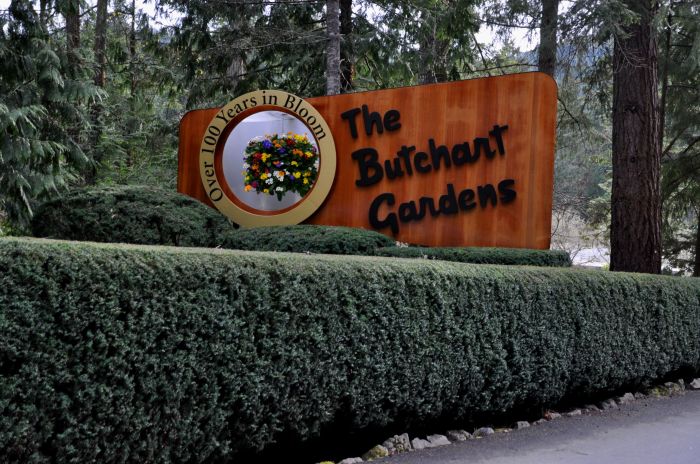




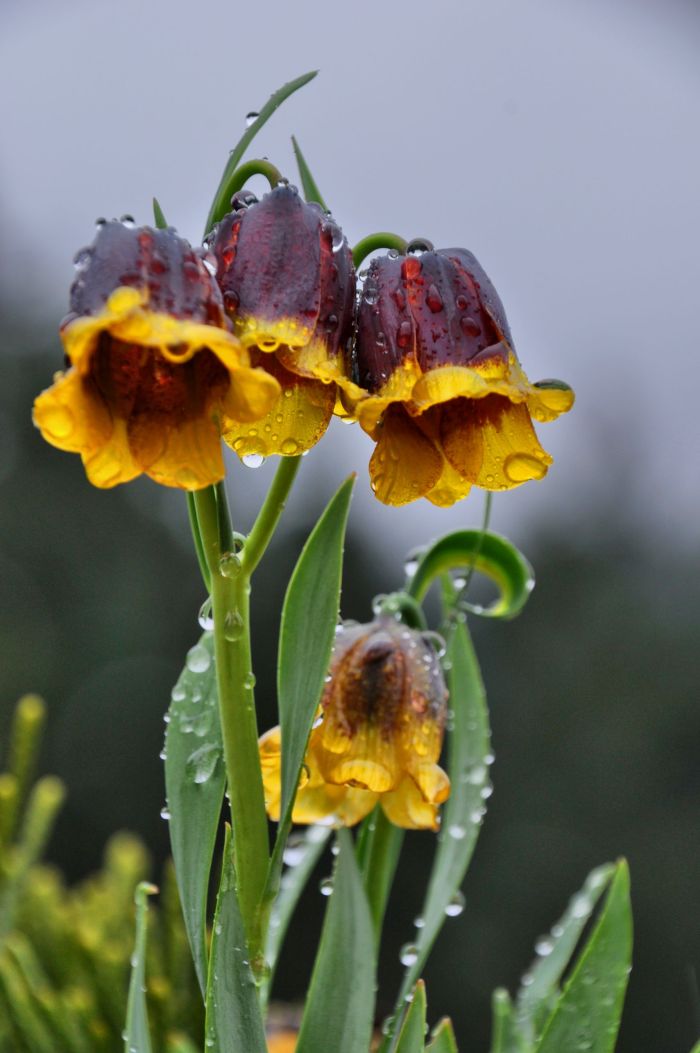




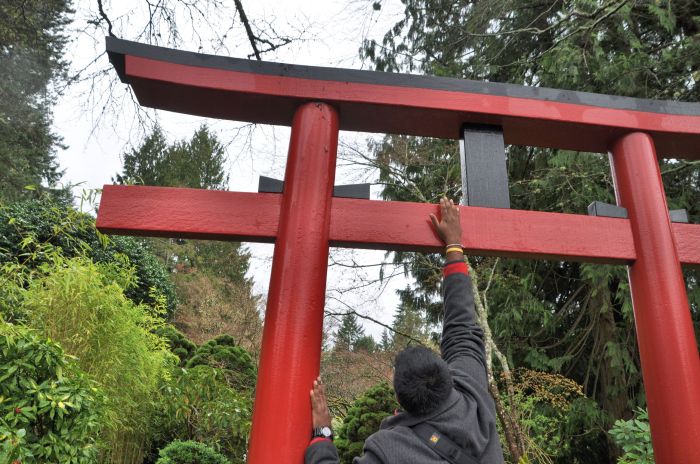








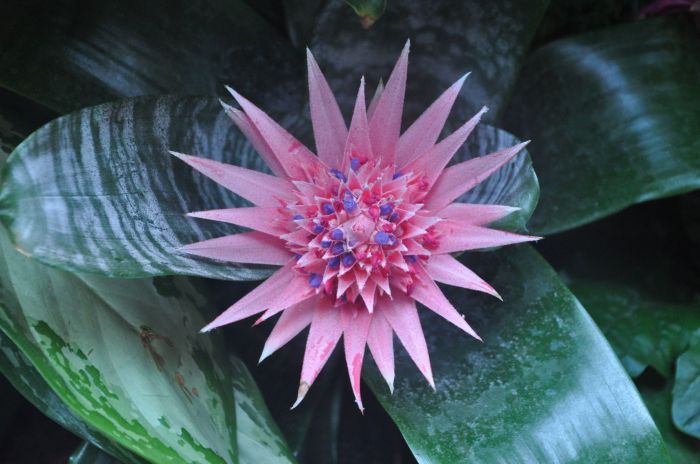
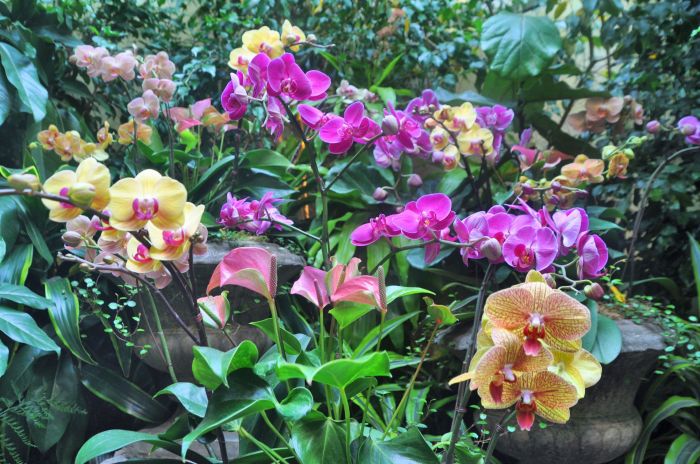
Superb shots Crystal, and informative text. Well done
Thank you! I liked hearing the story of Mr. and Mrs. Butchart and how they both loved and contributed to the garden.
Thanks for the show. It was a refreshing view with the rainy days we are having again. I’ve seen a great deal of the gardens but obviously missed a bit. Now I MUST go back to see the rest. I remember it as stunning and beautiful. Your photos let me know those aren’t strong enough words.
Indeed, the words are appropriate. Of course you missed some of it; I’m sure I did too. That place is huge! And just imagine how different it will be all year ’round. We talked to someone about how empty it was, when the rain was not *so* very bad, and the staff said that many of their daily visitors are locals who have year passes. Since they can (and do) come any day of the year, then they really do come on the nicer days and avoid the rain.
Most tourist places really do rely on their locals a lot.
This is certainly a most beautiful and popular garden! I have seen views of it on three or four different blogs now, but this is the most comprehensive tour yet. It is stunning, even in the rain and out of rose season! Thanks for sharing!
Oh wow, thank you Pauline! I just assumed other posts would be better if they were from a different season, so your comment means so much to me. It was stunning, truly. And the trees were in blossom, which can’t be imitated at any other time of the year. I think if a person really loves gardens, then a garden can be lovely in March too, because you recognize the baby steps toward a summer garden: all the fuzzy buds and swollen catkins and spring bulbs.
Your photo of the Bells in the Garden is just lovely, especially with the water droplets on the petals.
The gardens sound like a great place to visit, Crystal. Thanks for the introduction.
Thank you, Laurie. I just love those little flowers too – especially since they were small and I am able to display them big and showy! I have been hearing about Butchart Gardens for probably 20 years, so when we planned this trip up the coast, it’s the only thing I had on my agenda! Well, that and meeting a blogger friend who lives near Vancouver. 🙂 It is a great place to visit, especially for me since the gardens are in a lovely rural area with super friendly people. In fact, one of those super friendly people was out doing yard work the evening before when M and I tried to visit the garden but found it closed. So we talked to the local and asked if there was anyplace to get a room nearby. He gave excellent step by step instructions that led us right to the Waddling Dog, and we loved that place so much!
We did not visit the Butterfly Garden, which is nearby, so I guess I need to take the ferry out there again one day.
Wow, I thought sure I’d be behind in touching base with you. Phew!
By the way, I’m so glad you got to meet another blogger friend. So cool!
really enjoyed the post – and not too many pics for me 🙂 – and Jennie’s garden is amazing – the sunken garden looks amazing – (it all does) and the bells in the rain pic is my fav 🙂 ❤
I’m glad you liked the photos! I get a little self-conscious sometimes about how many I include. They do make a post extra-long. So I do appreciate the feedback. That sunken garden is truly the most remarkable part of the garden. And what an idea – to make a quarry into a garden! Ha! She was certainly a visionary. (and possibly a wealthy visionary…)
yes, this Jeannie (?) was a visionary and I wonder if she ever knew how long her garden would linger and last.
and I know what you mean about the photos in a post – I am still finding my way with how many I add -however, I know as a blog reader, I kinda like it when a blogger notes that a lot of photos are coming (just like you did here) it really changes the way we view them and we almost digest more because it was presented that way (at least for me). Also, in my opinion, I think adding too many photos is always okay because we can skim fast and soak up ones we love – but with too much text – well that is sometimes hard to know what to do with., I once heard a blogger say that if you go over xxx words – well maybe a blog post is not the place for that – maybe a book is…. and I always liked that comment. anyhow, have a nice day xxoo
Beautiful gardens and photo – thanks for sharing them with us all!
My favourite is the Aechmea fasciata bromeliad – sometimes called the Urn plant or Silver Vase. 🙂
Glad you liked the photos. The one you like in particular was in the hot house, and one that my friend Mads said grew wild in Sri Lanka. I can hardly imagine stumbling across something that beautiful growing in the wild. Thanks for your comment!